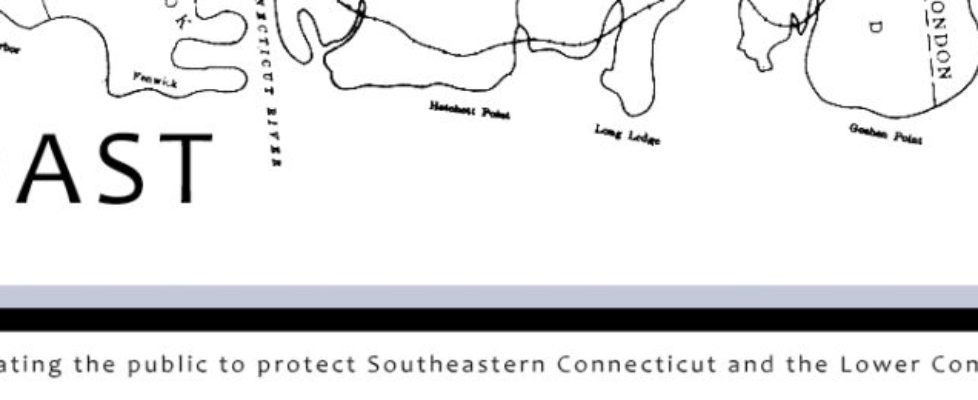A Flurry of News on NEC Future…
The following post was published by SECoast and is shared with us here by the Executive Director of SECoast Gregory Stroud. Greg has summed up all the new developments in the “Old Saybrook to Kenyon Bypass” of the last few days and put them in one convenient post.
There has been a flurry of news in the last 24 hours, coming in the wake of the informal March 1 deadline for public comment. Most importantly, two letters… one from Governor Malloy here asking for the Federal Railroad Administration to focus investments on the existing corridor, and to drop plans for the 79 miles of new rail corridor between New Rochelle to Greens Farms, and Kenyon to Old Saybrook; and another concurring letter signed by every state department of transportation in the Northeast, except New York, here.
These letters are packed with information, including an unexpected request to delay electrification between Hartford and Springfield, which is sure to please Providence, but which has everyone else scratching their heads.
A month ago, in quiet communication with officials at the Connecticut Department of Transportation, SECoast and the Connecticut Trust for Historic Preservation drew up a detailed list of hot buttons and common ground, and I have to say that the rough outlines of our list and the latest requests from Governor Malloy et al, at first glance, are pretty close.
Yesterday the Connecticut Trust issued the following statement in response…
The Connecticut Trust for Historic Preservation thanks Governor Malloy for a clear and timely statement calling for the elimination of nearly 80 miles of new right of way through numerous coastal communities,” said Daniel Mackay, Executive Director of the Connecticut Trust. “We appreciate that the governor has adopted an approach for investing in the Northeast Corridor while respecting the unique historic and environmental qualities of Connecticut.
No doubt, the biggest winner yesterday — if the FRA heeds the advice — was Fairfield County, where state and federal officials seemed intent on the New Rochelle to Greens Farms route as recently as last week. This has apparently changed, and we’d like to believe that our efforts over the last month, directed toward briefing and coordinating with state and local officials, and preservationists, in Greenwich, Cos Cob, Westport, Stamford, Darien, is at least part of the reason for the change. You can find coverage of that Fairfield effort here in Robert Koch’s piece for the Hearst Papers. You can find Jo Conboy’s strong letter for Greenwich Preservation Trust on NEC Future planning in Fairfield, here.
I’d also strongly encourage you to read Catherine Hewitt’s piece on the Rhode Island angle for the Westerly Sun. It’s here. As recently as December, most of the support for the Kenyon to Old Saybrook Bypass was in Providence, but that’s changing, with the fierce opposition centered around Charlestown, RI, and with growing frustration among Rhode Island’s lawmakers with the lack of detail and answers from the Federal Railroad Administration in recent meetings with Charlestown, and with a Rhode Island Senate Finance Committee in Providence.
In the Hartford Courant, Don Stacom takes the broad view in a brief piece. Stacom is always worth a read. You can find him here.
For the New London Day, Kim Drelich has two pieces in two days. The first covers the National Trust’s public comment. You can find that piece here. You can find the National Trust letter here.
The Connecticut Trust has been briefing lawyers at the National Trust for a little over a year, and more intensively for the last few months. Betsy Merritt has taken the lead for the National Trust. An impressive lawyer. You can find out more about her here. Merritt’s letter focuses on issues specifically related to “4(f)” of the DOT Act of 1966…
The Department of Transportation Act (DOT Act) of 1966 includes a special provision – Section 4(f) – which stipulates that FHWA and other DOT agencies cannot approve the use of land from publicly owned parks, recreational areas, wildlife and waterfowl refuges, or public and private historical sites unless the following conditions apply:
There is no feasible and prudent avoidance alternative to the use of land; and the action includes all possible planning to minimize harm to the property resulting from such use; OR The Administration determines that the use of the property will have a de minimis impact.
Basically, Merritt makes the point that while NEC Future settles all “avoidance” in Tier 1, given the lack of detail, this is impossible. Or to put things another way… It’s a good thing we didn’t take a lot of bad advice and wait around for Tier 2, when we’d be looking at these key legal protections in the rear view mirror.
The National Trust has also strongly endorsed and circulated joint public comments by the Connecticut Trust and SECoast on the state and federal level. Thanks, Betsy!
You can find more coverage from Kim Drelich on Governor Malloy’s latest, and our response here.
And lastly… the FRA is still accepting comments at info@necfuture.com and they still have all legal force of comments made on February 28… the deadline is informal… so keep writing!
SECoast is an independent nonprofit special project of the Connecticut Trust for Historic Preservation.
Donations made to SECoast through CT Trust are tax-deductible. Every dollar of your donation is given to SECoast to support our efforts in Southeastern Connecticut.
We also accept donations by mail
Connecticut Trust for Historic Preservation
940 Whitney Avenue
Hamden, CT 06517-4002
Make your check payable to CT Trust, with “For SECoast” on its front face.
Aren’t part of the SECoast mailing list? Click here to join.
